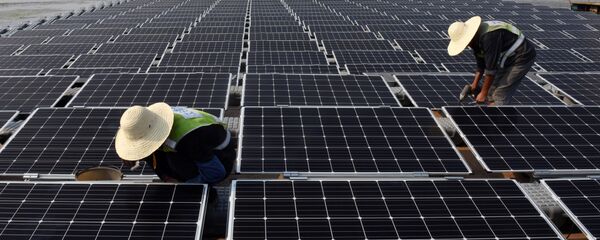A few materials scientists have, however, announced the discovery of a means to increase concentrated solar power efficiency, according to a paper published recently in the journal Nature by researchers at the Georgia Institute of Technology and the University of Wisconsin — Madison and Oak Ridge National Laboratory.
Concentrated solar power systems generate power by concentrating a large area of sunlight onto a small area through the use of mirrors or lenses. Electricity is created when the concentrated light is converted to high-temperature heat, which powers a heat engine connected to an electrical power generator. The higher the temperature of the heat, the more work can be extracted.
Above a specific temperature, however, steam can be replaced with supercritical carbon dioxide, a fluid state of the molecule held at or above its critical temperature and pressure. Although supercritical carbon works more efficiently than steam, it requires extremely high temperatures (greater than 1,000K). Solar water-heating systems are currently most predominantly made of copper, as it is a good thermal conductor that resists corrosion. However, many metals, including copper, melt at the high temperatures required for the use of supercritical carbon dioxide.
"Storing solar energy as heat can already be cheaper than storing energy via batteries, so the next step is reducing the cost of generating electricity from the sun's heat with the added benefit of zero greenhouse gas emissions," Kenneth Sandhage, a professor of materials engineering at Purdue University and one of the researchers involved in the study, told CleanTechnica on Friday.
Researchers studied materials used to make nozzles for solid-fuel rocket engines and discovered that composite materials, including tungsten and zirconium carbide, have very high melting points (3,700K) and conduct heat very well. They concluded that such materials could be used to manufacture heat exchangers that tolerate the use of supercritical carbon dioxide in the generation of solar power.
An economic analysis by the researchers also noted that the cost to manufacture heat exchangers made of exotic composite materials is comparable or lower than the price of stainless steel or nickel alloy-based exchangers.
As global warming due to human-induced climate change accelerates the rise of atmospheric temperatures, increasingly efficient solar power generation can act as a tool to mitigate some of the environmental shift's more deadly effects.





